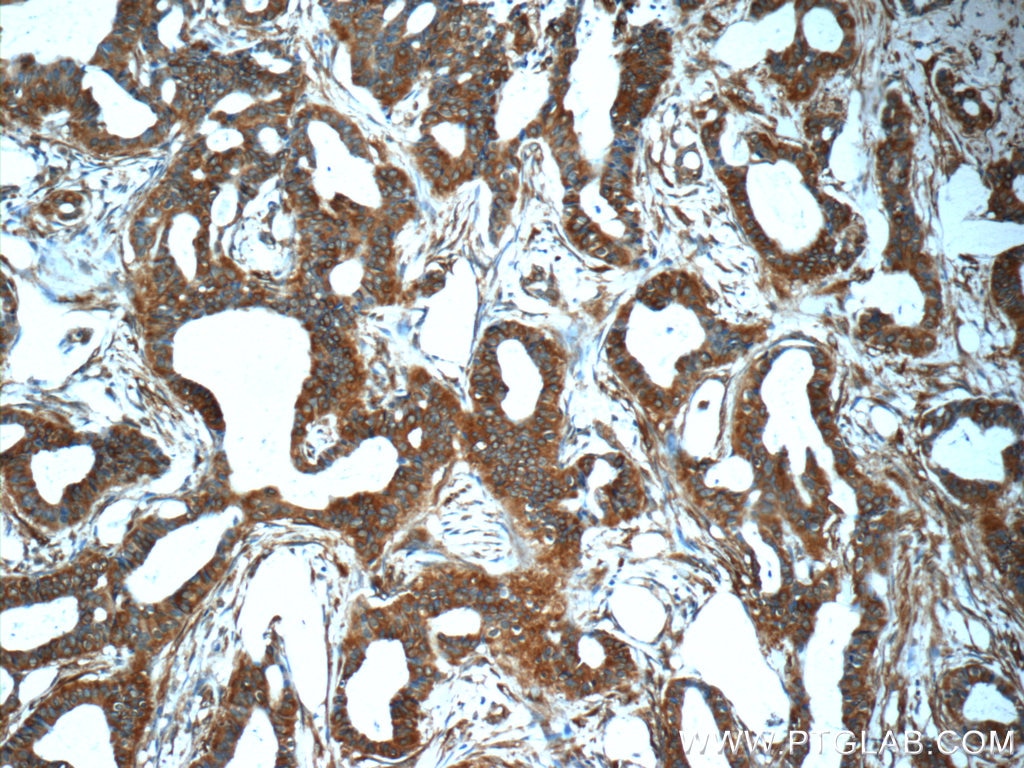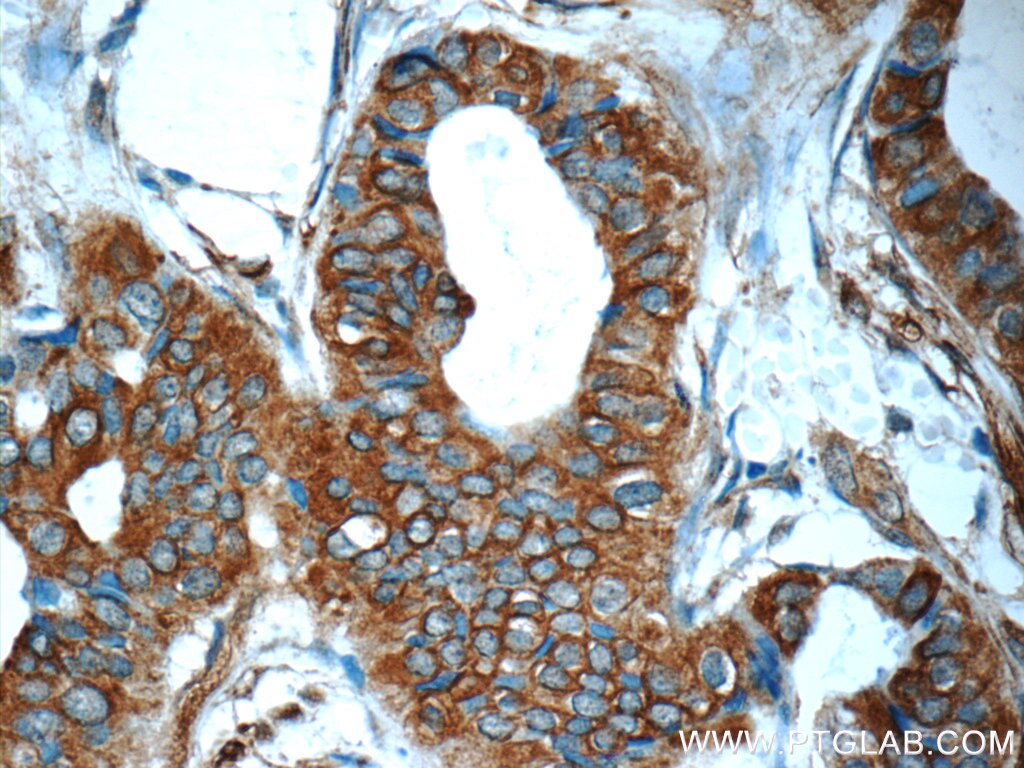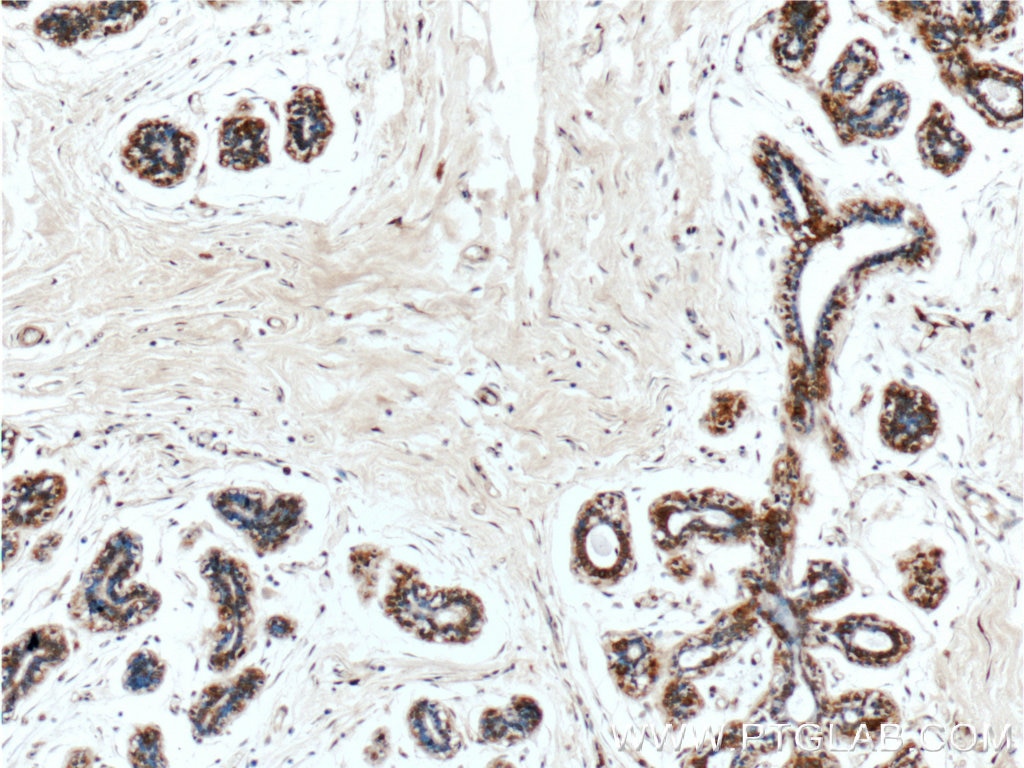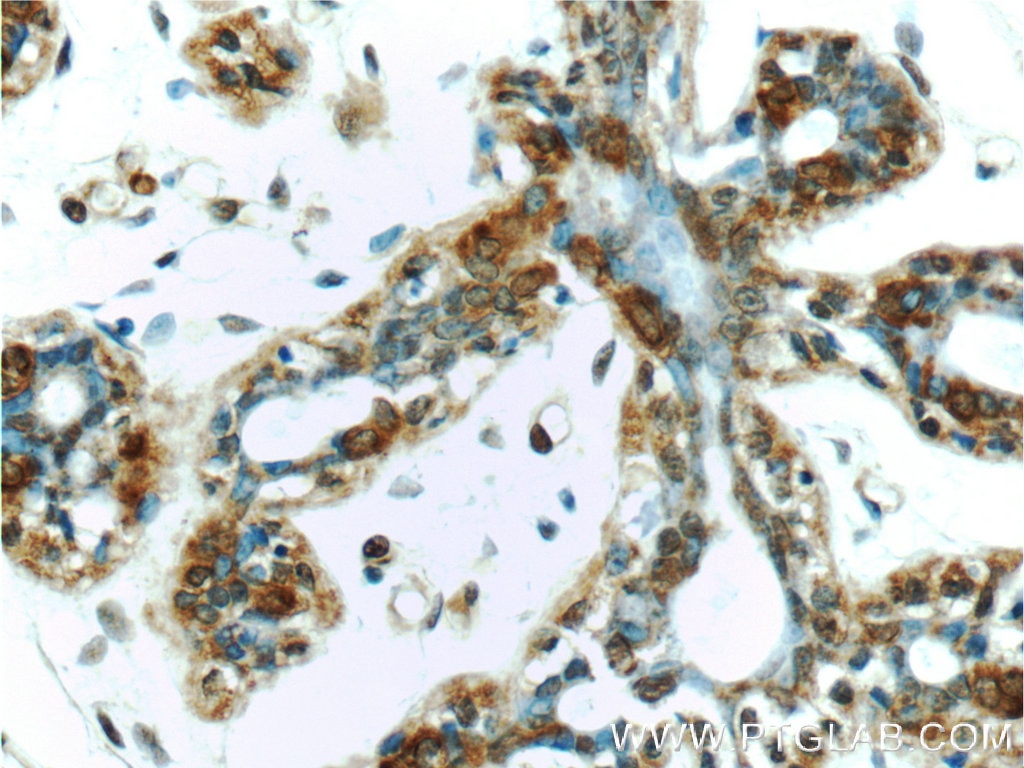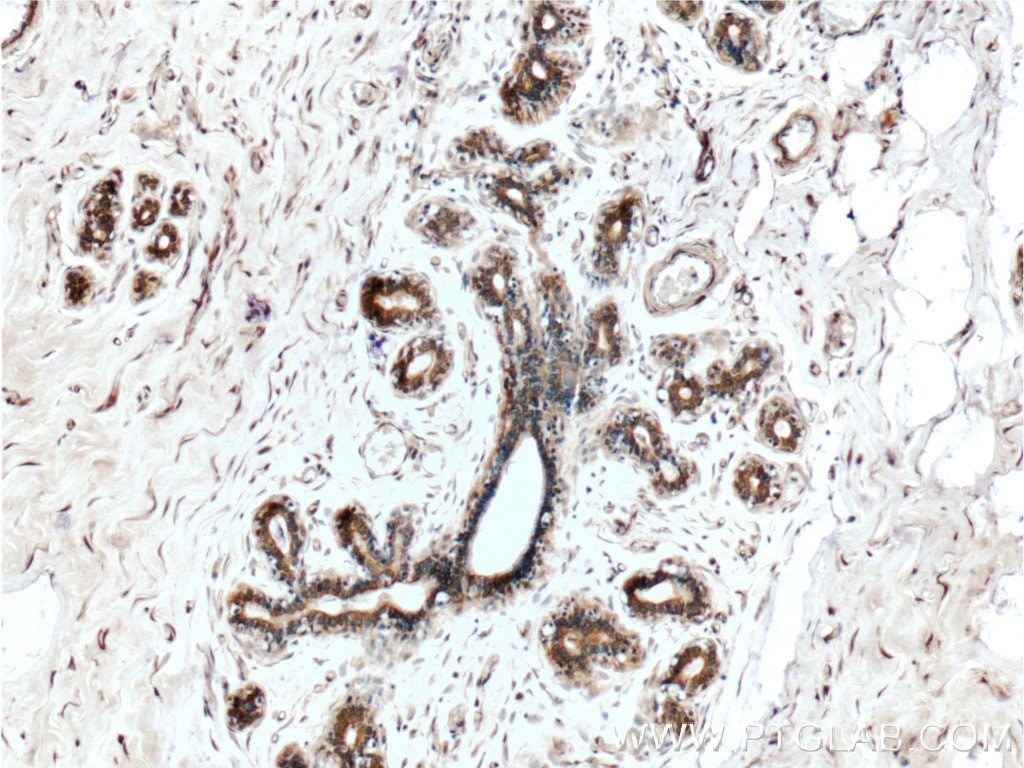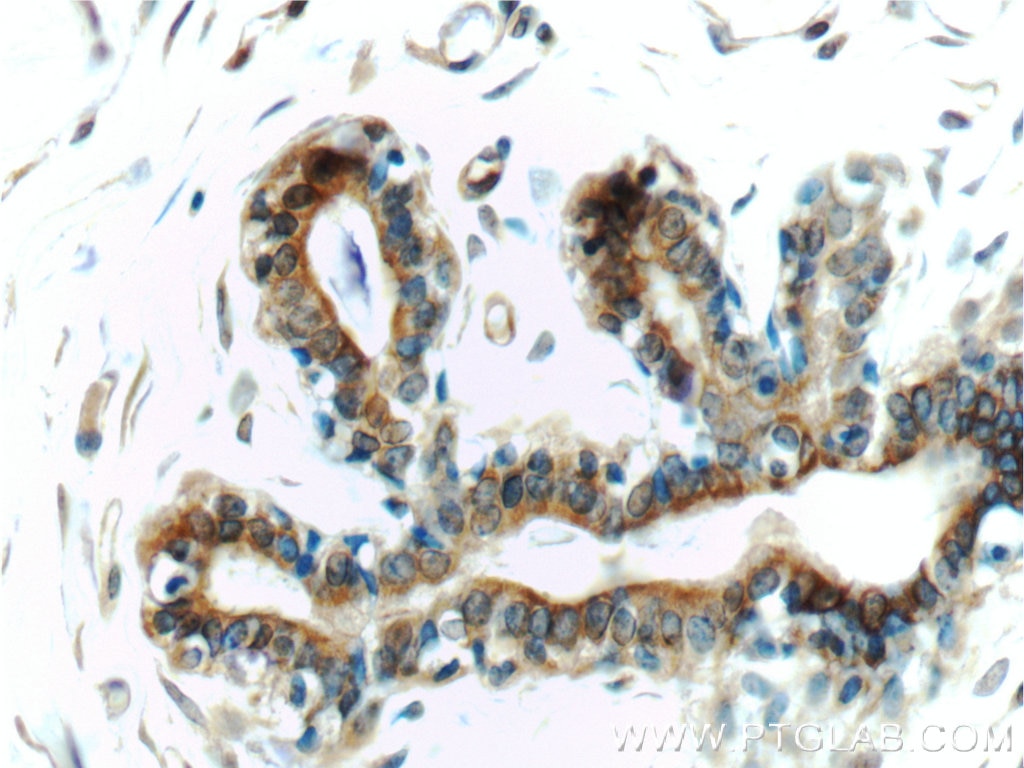Validation Data Gallery
Tested Applications
| Positive IHC detected in | human breast cancer tissue, human breast tissue Note: suggested antigen retrieval with TE buffer pH 9.0; (*) Alternatively, antigen retrieval may be performed with citrate buffer pH 6.0 |
Recommended dilution
| Application | Dilution |
|---|---|
| Immunohistochemistry (IHC) | IHC : 1:20-1:200 |
| It is recommended that this reagent should be titrated in each testing system to obtain optimal results. | |
| Sample-dependent, Check data in validation data gallery. | |
Product Information
25645-1-AP targets Mammaglobin A in IHC, ELISA applications and shows reactivity with human samples.
| Tested Reactivity | human |
| Host / Isotype | Rabbit / IgG |
| Class | Polyclonal |
| Type | Antibody |
| Immunogen | Mammaglobin A fusion protein Ag22324 相同性解析による交差性が予測される生物種 |
| Full Name | secretoglobin, family 2A, member 2 |
| Calculated molecular weight | 93 aa, 10 kDa |
| GenBank accession number | BC128252 |
| Gene Symbol | Mammaglobin A |
| Gene ID (NCBI) | 4250 |
| RRID | AB_2880174 |
| Conjugate | Unconjugated |
| Form | Liquid |
| Purification Method | Antigen affinity purification |
| UNIPROT ID | Q13296 |
| Storage Buffer | PBS with 0.02% sodium azide and 50% glycerol , pH 7.3 |
| Storage Conditions | Store at -20°C. Stable for one year after shipment. Aliquoting is unnecessary for -20oC storage. |
Background Information
SCGB2A2, also known as mammaglobin A, is a member of the secretoglobin superfamily. It is a breast cancer-associated antigen almost exclusively over-expressed in primary and metastatic human breast cancers, making it a specific molecular marker and a potential therapeutic target for breast cancer. SCGB2A2 is a 93-amino acid protein with a calculated molecular weight of 10.5 kDa.
Protocols
| Product Specific Protocols | |
|---|---|
| IHC protocol for Mammaglobin A antibody 25645-1-AP | Download protocol |
| Standard Protocols | |
|---|---|
| Click here to view our Standard Protocols |
